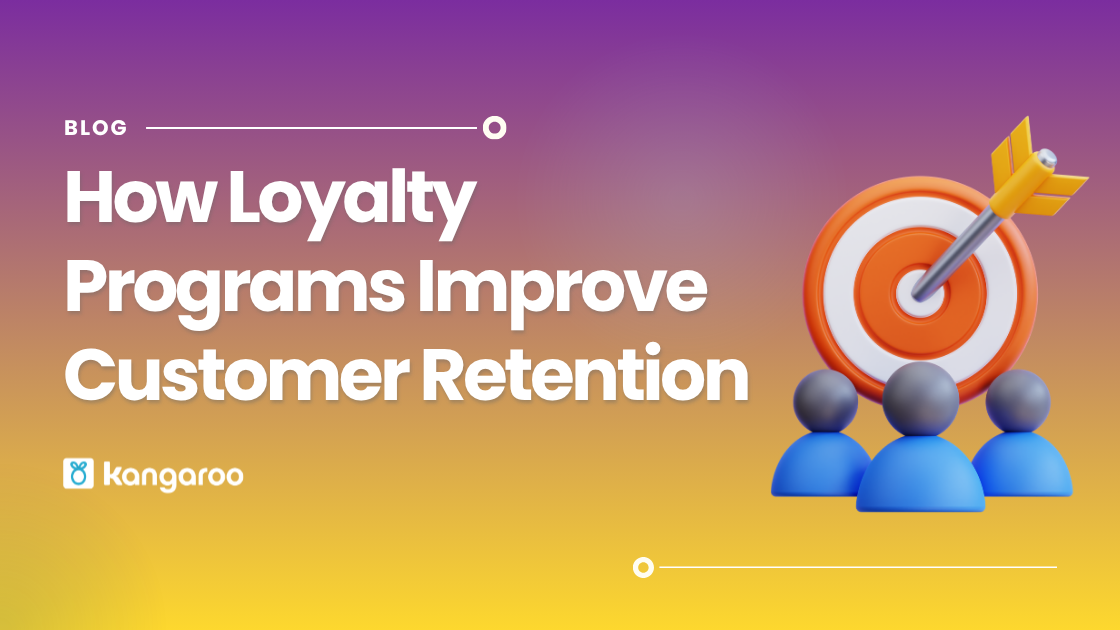In today’s competitive retail and service landscapes, businesses are constantly looking for ways to retain customers. Acquiring new customers is essential, but it is significantly more expensive than keeping existing ones. This is where customer retention with loyalty program strategies comes into play. By investing in a well-structured loyalty program, businesses can not only retain their customers but also increase engagement, drive repeat purchases, and create long-term advocates for their brand.
In this blog, we’ll explore the mechanics of loyalty programs, their impact on customer retention, and actionable strategies that businesses can use to maximize their effectiveness.
Understanding Customer Retention
Customer retention refers to a company’s ability to keep its customers over time. It is a critical metric because repeat customers are more likely to make larger purchases, refer new clients, and provide valuable feedback. Studies show that increasing customer retention rates by just 5% can boost profits by 25% to 95%.
The key to effective customer retention lies in engagement. Brands that continually engage customers with personalized offers, rewards, and exceptional service are more likely to cultivate loyalty. This is precisely where a loyalty program becomes a game-changer.
What Is a Loyalty Program?
A loyalty program is a structured marketing strategy that rewards customers for their continued engagement with a brand. Rewards can come in the form of points, discounts, exclusive offers, or other benefits that encourage repeat business.
Loyalty programs are not just about giving away freebies—they’re about building an emotional connection between the brand and its customers. When customers feel valued and recognized, they are more likely to continue doing business with the brand, thereby improving customer retention with loyalty program initiatives.
How Loyalty Programs Boost Customer Retention
1. Encouraging Repeat Purchases
One of the most immediate benefits of a loyalty program is that it incentivizes repeat purchases. By offering points or rewards for every transaction, customers are motivated to come back and buy more.
For example, a retail store might offer 1 point for every $1 spent, which can later be redeemed for discounts or free products. This creates a tangible benefit for returning, making customers more likely to stick with your brand rather than explore competitors.
Impact: Businesses that implement loyalty programs often see a 3x increase in repeat visits from existing customers, according to industry data.
2. Increasing Customer Lifetime Value (CLV)
Customer lifetime value (CLV) measures the total revenue a business can expect from a single customer over time. Loyalty programs directly impact CLV by encouraging ongoing engagement.
When customers are rewarded for every purchase or interaction, they are more likely to spend more over time. Programs that offer tiered rewards or exclusive perks for high spenders can amplify this effect, turning casual buyers into high-value repeat customers.
3. Strengthening Emotional Connection
Loyalty programs are not just transactional—they can also create an emotional bond. Personalized rewards, birthday bonuses, and exclusive member events make customers feel appreciated.
This emotional connection is crucial because customers are more likely to stay loyal to brands that recognize and value them. When your customers feel special, they are less likely to switch to competitors, boosting customer retention with loyalty program efforts.
4. Providing Valuable Customer Insights
Loyalty programs are also a goldmine of customer data. Every interaction, purchase, and preference shared through the program provides insights into customer behavior.
Businesses can analyze this data to understand buying patterns, tailor offers, and design personalized marketing campaigns. By delivering highly relevant experiences, companies can significantly improve engagement and retention.
Example: A coffee shop could use purchase data to send a special offer on a customer’s favorite drink, increasing the likelihood of repeat visits.
5. Encouraging Referrals and Advocacy
Loyalty programs don’t just retain customers—they turn them into advocates. Referral rewards encourage satisfied customers to introduce your brand to friends and family.
When customers actively promote your brand, they are more likely to remain loyal themselves. Referral incentives can be in the form of extra points, discounts, or exclusive rewards, creating a win-win scenario.
Types of Loyalty Programs
Businesses can choose from several types of loyalty programs depending on their objectives, industry, and customer base. Here are some common examples:
1. Points-Based Programs
Customers earn points for each purchase or action, which can later be redeemed for discounts, products, or services.
Pros: Easy to understand and flexible.
Cons: Must maintain clear value for points to avoid disengagement.
2. Tiered Programs
Customers unlock higher rewards or exclusive perks as they spend more or engage more frequently.
Pros: Encourages higher spending and long-term engagement.
Cons: Requires careful structuring to avoid customer frustration.
3. Cashback Programs
Customers earn a percentage of their purchase back as cash or store credit.
Pros: Simple and directly tied to spending.
Cons: Less personal than other loyalty options.
4. Subscription or Membership Programs
Customers pay a recurring fee to access exclusive benefits and discounts.
Pros: Guarantees revenue and encourages regular engagement.
Cons: High expectations for exclusive content or perks.
5. Gamified Programs
Incorporates game-like elements such as challenges, badges, and rewards for completing specific actions.
Pros: Fun, engaging, and encourages frequent interactions.
Cons: Can be complex to manage and communicate effectively.
Best Practices for Maximizing Customer Retention with Loyalty Programs
1. Keep It Simple
Complicated programs can confuse customers and lead to disengagement. Make earning and redeeming rewards straightforward. Clear communication of program benefits and rules is essential.
2. Personalize the Experience
Personalized offers, birthday rewards, and targeted promotions resonate more with customers. Use customer data to deliver tailored experiences that make them feel valued.
3. Offer Meaningful Rewards
The value of rewards should align with customer expectations. Whether it’s a discount, free product, or exclusive access, the reward should feel significant enough to encourage repeat engagement.
4. Promote Across Channels
Ensure customers are aware of your loyalty program by promoting it across multiple touchpoints—email, social media, in-store signage, and your website. Consistent messaging increases participation rates.
5. Track and Optimize
Continuously monitor the program’s performance. Track metrics such as repeat purchase rate, customer lifetime value, and reward redemption rates. Use these insights to tweak the program for maximum impact.
How Kangaroo Rewards Helps Businesses Improve Customer Retention
At Kangaroo Rewards, we specialize in helping businesses of all sizes implement loyalty programs that drive measurable results. Here’s how our platform improves customer retention with loyalty program initiatives:
-Omnichannel Integration: Whether your business operates online, in-store, or both, our platform integrates seamlessly with POS systems and e-commerce platforms such as Shopify, WooCommerce, Magento, Lightspeed, and more.
-Customizable Rewards: Create points-based, tiered, referral, or subscription-based loyalty programs tailored to your customers’ preferences.
-Automated Engagement: Automate campaigns, birthday rewards, and personalized offers to engage customers consistently without adding extra work.
-Data-Driven Insights: Analyze customer behavior, track program performance, and optimize campaigns to maximize retention and lifetime value.
-Referral Programs: Encourage satisfied customers to bring new business through referral rewards, multiplying the impact of your loyalty strategy.
By combining powerful features with intuitive design, Kangaroo Rewards ensures your loyalty program not only retains customers but also turns them into long-term advocates for your brand.
Measuring Success in Customer Retention
To ensure your loyalty program is effective, it’s crucial to track key metrics:
-Repeat Purchase Rate: How often customers return to make additional purchases.
-Customer Lifetime Value (CLV): The total revenue a customer generates over their relationship with your brand.
-Redemption Rates: How often customers redeem rewards, indicating engagement.
-Referral Participation: The number of customers actively referring friends or family.
-Customer Satisfaction: Measured through surveys, reviews, and net promoter scores (NPS).
Tracking these metrics allows you to adjust your program, reward structures, and engagement strategies for optimal results.
The Future of Loyalty Programs
As customer expectations evolve, loyalty programs are becoming more sophisticated. Integration with mobile apps, gamification, AI-driven personalization, and real-time location-based offers are just a few trends shaping the future. Businesses that adopt modern loyalty solutions are better positioned to retain customers and stay ahead of competitors.
By focusing on meaningful rewards, personalization, and seamless experiences, companies can harness the full potential of customer retention with loyalty program strategies.
Conclusion
Customer retention is more than just keeping customers—it’s about building long-lasting relationships that drive repeat purchases, increase engagement, and create brand advocates. A well-designed loyalty program is one of the most effective tools for achieving this goal.
From points-based rewards to tiered memberships and gamified experiences, loyalty programs can significantly improve customer retention. By leveraging platforms like Kangaroo Rewards, businesses can integrate, automate, and personalize their loyalty programs, ensuring measurable results without adding complexity.
In today’s competitive market, investing in a loyalty program isn’t just a nice-to-have—it’s a necessity. By prioritizing customer retention with loyalty program strategies, businesses can turn first-time buyers into loyal customers, grow their revenue, and achieve sustainable success.
Ready to boost customer retention and engagement?
Start your loyalty program with Kangaroo Rewards today and see how simple, smart rewards can transform your business.



